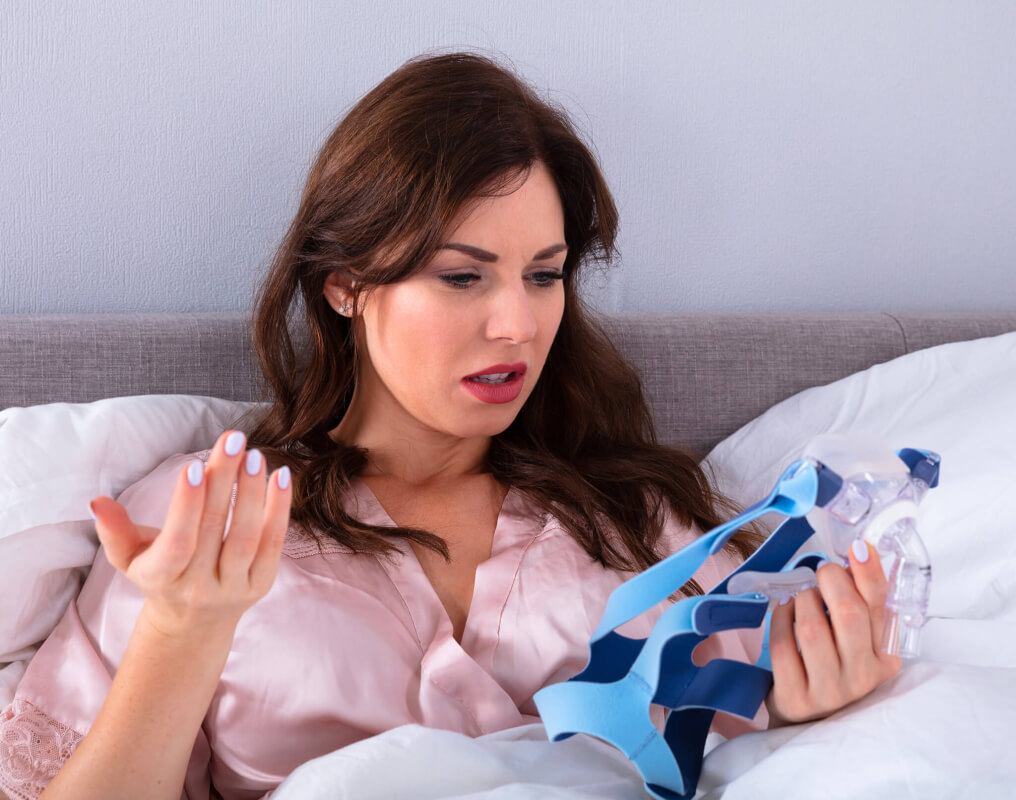Advertising Disclosure
Best CPAP Masks

Sleep apnea is a serious condition that can affect your health, the quality of your life and your relationships. Fortunately, there are successful treatments for it. We have already talked about Continuous Positive Air Pressure machines, which are a way of treating sleep apnea at home. To use those machines, you will need appropriate CPAP masks, and this article will tell you more about them – what to look for when buying one, different types of masks, and in the end, some great examples that might be just what you need. Let’s go!
What to consider before buying a CPAP mask
Before we get into different types of CPAP masks, here are a few things you need to take into consideration:
- How you breathe while sleeping – you might need someone else to observe you while sleeping to determine if you breathe through the mouth, nose, or both.
- Your sleeping position – while it is the best idea to sleep on your back while wearing any kind of CPAP mask, some mask types are more tolerable towards other sleeping positions, which is something you should definitely consider. And of course, moving a lot when sleeping will probably determine which mask you can wear.
- Are you claustrophobic – even if you don’t have full-blown claustrophobia, wearing a mask over your whole face might stop you from falling asleep.
- Size of your head – while a bigger mask will undoubtedly be more comfortable, it might leak air, or move out of position during the night. Smaller masks, on the other hand, are not going to be as comfortable and might leave pressure marks. Make sure you pick the appropriate size and don’t be afraid to ask for adjustments.
- Try out different attachments – these might be velcro bands, quick-release clips, chinstraps, heated humidifiers, mask liners, whatever makes it more comfortable to wear your mask. Rember, you need to wear it every single night, without exceptions, not sporadically. That is the only way it’s going to help treat your sleep apnea.
Types of CPAP Masks – their advantages and disadvantages
Full face CPAP mask

However, this mask type has some obvious drawbacks, mainly because of its size. As it covers a larger area, it is much easier to leak, and if you are a nervous sleeper that fidgets a lot, this is not the type of mask for you. Also, the size of this mask only allows sleeping on the back, nothing else. And lastly, this apparatus covers a considerable amount of face and is far from ideal for claustrophobic people.
Nasal CPAP Masks

However, there are a few limitations. First, if you breathe through the mouth, you will need a full-face mask, or you might try chinstraps. And while nasal masks usually seal really good, having a lot of facial hair might interfere with the seal tightness. Also, while nasal masks are considerably smaller than full-face, they can still trigger claustrophobia in sensitive patients.
Nasal pillow CPAP masks

The main drawback of nasal pillow masks is that they are unable to deliver high-pressure settings comfortably. Second, these are nose-only, and if you breathe through your mouth, or have allergies or sinus infections that prevent your nose from working correctly, this is not the option for you.
Our 3 Best Picks
Best Full-face CPAP mask – Quattro FX by ResMed

Quattro FX is quite comfortable, and the dual-wall cushion system called SpringAir softly sits on your face, while not sacrificing efficacy – this mask is able to deliver high-pressure CPAP. For a full-face mask, this one is very flexible, and it allows head movements without breaking the seal, which is made possible by the rotating elbow.
In short ResMed Quattro FX gives you all the benefits a full-face mask has while trying to minimize the flaws, which it does successfully.
Best nasal CPAP mask: DreamWear Nasal by Philips Respironics

Also, because this mask has minimal contact with your face, while still sealing tightly, it won’t leave marks. Although this is a nasal mask, it doesn’t rest over your nose, but under it. The whole frame is soft, and it won’t cause irritation along the cheeks. Also, it avoids the eyes completely, and you will have an unobstructed field of view, which is a plus for those of you who have claustrophobia, and it even allows wearing glasses.
Best Nasal Pillow CPAP Mask: AirFit P10 by ResMed

AirFit P10 allows movement, as it is very flexible and lightweight. Nasal pillows will adjust to maintain the seal as you move, which makes this mask an excellent choice for people who change sleeping positions frequently. QuickFit headgear fits comfortably and is easy to adjust while giving a lot of freedom. In fact, the whole apparatus is extremely simple and easy to use, as it only has three pieces.
Conclusion
Now you know what you need to consider when browsing for a CPAP mask, and you are familiar with the different types of them. Plus, you have three terrific examples, one for each mask type. You can either take our word and buy one of those, or use them as a benchmark when comparing other masks you find.
Just remember, you can have the best CPAP machine and the most comfortable mask, but if you don’t wear it on a regular basis, it’s worth nothing. Consistency is the only treatment for your apnea, so make sure you take your CPAP therapy every night.







